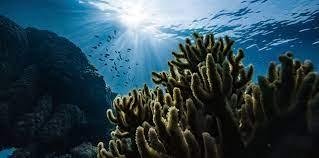Ballast water is essential for the stability of ships, but it also presents ecological challenges when untreated water is discharged from one marine environment to another. To address this, stringent international regulations like the Ballast Water Management (BWM) Convention mandate that ships must effectively manage and treat their ballast water. One crucial component of maintaining compliance is the accurate calibration of ballast water sensors. Proper sensor calibration helps ship operators avoid costly penalties, meet regulatory standards, and protect marine environments.
In this article, we’ll explore the importance of ballast water sensor calibration, the methods used, and best practices for effective calibration to ensure accuracy and reliability in measurements.
What is Ballast Water Sensor Calibration?
Ballast water sensors are used to monitor the chemical and physical properties of ballast water, including salinity, temperature, turbidity, and other potential contaminants. Calibration of these sensors is the process of adjusting them to ensure their readings match set reference values, so they deliver precise, accurate measurements over time.
Regular calibration is essential because sensors can drift over time due to wear, environmental exposure, or biofouling. Without calibration, readings can become inaccurate, potentially leading to non-compliance with ballast water regulations.
Why is Calibration Important for Compliance?
The BWM Convention and regulations by organizations like the U.S. Coast Guard require vessels to meet strict standards for ballast water discharge. Accurate sensor measurements are critical to demonstrate compliance, as authorities regularly inspect and verify the conditions of ballast water systems.
- Ensuring Regulatory Compliance: Sensor calibration aligns the performance of sensors with established regulatory benchmarks, which is critical for passing inspections and avoiding penalties.
- Environmental Protection: By ensuring that ballast water treatment systems are operating effectively, calibration helps prevent the spread of invasive species and protects ecosystems.
- Operational Efficiency: Accurate sensors contribute to optimal operation of treatment systems, minimizing energy use and reducing overall operational costs.
- Data Reliability: Reliable data is necessary for monitoring the performance of ballast water management systems (BWMS), aiding in both operational and compliance reporting.
How Often Should Ballast Water Sensors Be Calibrated?
The frequency of calibration depends on several factors, including the sensor type, environmental conditions, and manufacturer recommendations. Most manufacturers suggest calibrating ballast water sensors every 6-12 months; however, ships operating in challenging or highly variable environments may require more frequent checks.
Additionally, operators should consider recalibrating sensors if significant deviations in readings are detected, or if the vessel undergoes extended periods of inactivity.
Steps for Effective Ballast Water Sensor Calibration
Ballast water sensor calibration is a multistep process that requires attention to detail and the right equipment. Below are the general steps for effective calibration:
- Preparation and Cleaning:
- Clean the sensor to remove any build-up or biofouling, as this can impact accuracy.
- Inspect for any signs of physical damage.
- Remove the sensor from the system if necessary, following manufacturer guidelines.
- Selecting Calibration Standards:
- Use standards that closely match the expected operating conditions. For example, if measuring salinity, ensure the calibration solution reflects similar salinity levels.
- Zero and Span Adjustments:
- Adjust the sensor to zero in the absence of the target measurement parameter, such as zero salinity or zero turbidity.
- Perform span adjustment to ensure the sensor responds accurately across its entire measurement range.
- Testing and Validation:
- Test the sensor against known reference points to confirm its accuracy.
- Perform validation checks to confirm the calibration is consistent across the entire sensor range.
- Documenting the Calibration:
- Keep detailed records of the calibration results, including the date, any observed deviations, and any adjustments made.
- Record calibration standards used and any recalibration procedures, as this is essential for regulatory audits and system diagnostics.
Types of Ballast Water Sensors and Their Calibration Requirements
Different types of ballast water sensors require unique calibration procedures. Here’s a look at common sensor types and what’s involved in their calibration:
- Salinity Sensors:
- Calibration of salinity sensors often involves solutions with known salinity levels. These sensors can be sensitive to temperature changes, so temperature compensation is typically factored into the calibration process.
- Turbidity Sensors:
- Turbidity sensors measure water cloudiness, which can indicate contamination levels. Calibration for turbidity sensors typically uses reference solutions with set turbidity values, which are compared to the sensor’s output.
- Temperature Sensors:
- Calibration of temperature sensors is often done by comparing them against known temperature points, with adjustments made if deviations are observed.
- pH Sensors:
- pH sensors require calibration with standard buffer solutions, typically at pH levels of 4, 7, and 10. Calibration can be impacted by biofouling or sensor aging, so frequent checks are necessary.
Common Challenges in Ballast Water Sensor Calibration
Calibration challenges arise due to environmental conditions, sensor types, and operational factors. Some of these challenges include:
- Biofouling:
- Biofouling is the accumulation of microorganisms, plants, or algae on sensor surfaces, which can interfere with accurate readings. Regular cleaning helps minimize biofouling and maintain sensor precision.
- Temperature Fluctuations:
- Sensors may experience accuracy issues in extreme or fluctuating temperatures. Calibrating in conditions similar to those the sensors will operate in helps reduce errors.
- Aging and Wear:
- Sensor components degrade over time, leading to “drift” in readings. Frequent calibration and regular replacement of aging components ensure continued accuracy.
- Human Error:
- Errors during calibration can arise from improper handling or incorrect use of calibration solutions. Adherence to standardized procedures and thorough training can help minimize these risks.
Best Practices for Ballast Water Sensor Calibration
To ensure reliable and consistent calibration, vessel operators can follow these best practices:
- Follow Manufacturer’s Guidelines:
- Every ballast water sensor has unique calibration requirements, and the manufacturer’s guidelines provide the best practices for accurate calibration.
- Implement a Routine Calibration Schedule:
- Establish a regular calibration schedule, and ensure it aligns with both regulatory requirements and manufacturer recommendations.
- Use Certified Calibration Solutions:
- Using certified reference standards helps maintain the accuracy and consistency of calibration results.
- Document All Calibration Activities:
- Keeping records of calibration activities is essential for regulatory compliance and helps track sensor performance over time.
- Engage Professional Calibration Services:
- In cases where ship personnel lack the expertise or equipment for accurate calibration, hiring professional services can ensure precision and regulatory compliance.
Future Trends in Ballast Water Sensor Technology and Calibration
Advancements in sensor technology are making it easier to monitor ballast water and achieve compliance. Trends include:
- Automated Calibration:
- Automated systems can perform routine calibration, reducing the risk of human error and the need for manual adjustments. These systems also allow for more frequent calibration, ensuring sensor accuracy over time.
- Remote Monitoring and Calibration:
- Digital technology enables remote monitoring, allowing calibration adjustments without physically accessing the sensor. This capability can improve calibration accuracy, especially for sensors in difficult-to-reach locations.
- Self-Cleaning Sensors:
- Newer sensors are being designed with self-cleaning capabilities, reducing biofouling and minimizing the need for frequent calibration.
- Improved Sensor Materials:
- Materials resistant to corrosion, wear, and biofouling are being incorporated into sensor designs, which prolongs sensor life and reduces the frequency of calibration.
Conclusion
Ballast water sensor calibration plays a crucial role in meeting regulatory standards and protecting marine ecosystems. Regular calibration, following established guidelines, and staying informed of emerging technologies can help vessel operators maintain compliance, reduce operational costs, and uphold their environmental responsibilities. By implementing a structured calibration program, ship operators can ensure reliable, accurate data that supports effective ballast water management, contributing to both regulatory compliance and marine conservation efforts.



More Stories
How Dentostack Facilitates Easy Management of Dental Clinics
Buy IPv4 Addresses or Lease IPv4 Addresses
How AWS Database Certified Video Course Help?